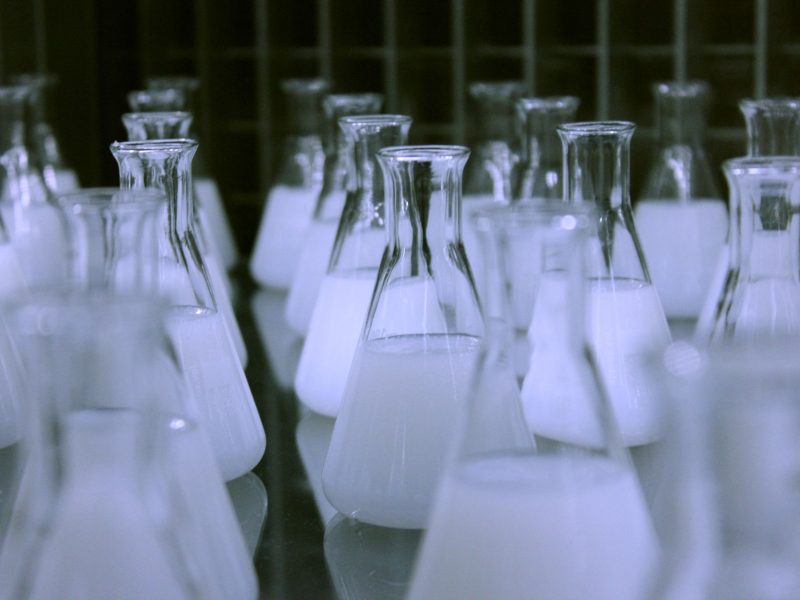
Enhancing XLPE Performance with TAIC: Improved Water Tree Resistance and Electrical Properties
Crosslinked polyethylene (XLPE) has gained significant attention in the field of electrical insulation due to its excellent mechanical, thermal, and electrical properties. However, its long-term reliability is challenged by water treeing, a degradation phenomenon that compromises the dielectric integrity of XLPE under high humidity and electric stress. Addressing this challenge, the incorporation of triallyl isocyanurate (TAIC) into XLPE matrices has emerged as a promising strategy to enhance water tree resistance and improve electrical properties. This essay explores the role of TAIC in improving the water tree resistance and electrical properties of XLPE, delving into its material interactions, molecular mechanisms, and broader implications for electrical insulation technology.
1.Introduction to XLPE and Challenges of Water Treeing
XLPE is widely used in cable insulation systems due to its superior properties compared to traditional polymeric materials. It offers high dielectric strength, low dielectric loss, and excellent resistance to thermal aging. However, prolonged exposure to water and electrical stress can result in the formation of water trees—micro-scale defects that grow within the XLPE matrix. Water trees consist of water-filled microvoids connected by channels, which eventually evolve into electrical trees, leading to insulation breakdown.
Despite extensive research into XLPE formulation, water treeing remains a critical issue. Therefore, innovative material modifications, such as the incorporation of additives like TAIC, are necessary to improve the resilience of XLPE under such conditions.
2.TAIC as an Additive in XLPE
TAIC is a multifunctional compound with a triazine core and allyl groups. Its unique chemical structure allows it to interact effectively with XLPE chains during the crosslinking process. TAIC is known for its ability to enhance crosslink density and thermal stability in polymer matrices. Recent studies indicate that TAIC can also improve the water tree resistance and electrical properties of XLPE, making it a versatile additive for electrical insulation applications.
2.1. Preparation of XLPE with TAIC
XLPE specimens incorporating different concentrations of TAIC are typically prepared using the hot pressing method. This process ensures homogeneous dispersion of TAIC within the XLPE matrix, optimizing its interaction with the polymer network. The selection of an appropriate TAIC content is critical to achieving the desired balance between improved water tree resistance and maintained electrical performance.
3.Impact of TAIC on Water Tree Resistance
Water tree resistance is a key parameter in evaluating the performance of XLPE under humid and high-voltage conditions. The inclusion of TAIC in XLPE has shown remarkable improvements in this area, as demonstrated through the water blade method.
3.1. Reduction in Microvoid Size
Water blade tests reveal that TAIC significantly reduces the size of microvoids in XLPE specimens. Without TAIC, the diameters of these voids are typically in the micron range, facilitating water ingress and the initiation of water trees. The addition of TAIC reduces these diameters to the submicron scale, thereby mitigating the conditions necessary for water tree formation.
3.2. Interaction with Water Droplets
The interaction of TAIC with water droplets further underscores its role in improving water tree resistance. Contact angle measurements and Monte Carlo molecular simulations demonstrate that TAIC disrupts the stability of water droplets on the XLPE surface. By disintegrating water droplets, TAIC effectively reduces the likelihood of water tree initiation. This behavior is attributed to the low mixing energy between TAIC and water molecules, which inhibits cohesive interactions necessary for water droplet formation.

4.Enhancement of Electrical Properties
Apart from its role in water tree resistance, TAIC also contributes to the enhancement of XLPE’s electrical properties. The incorporation of TAIC introduces a novel electron-bound state within the band gap of XLPE, as revealed by first-principles calculations. This phenomenon forms the basis for the improved dielectric performance of XLPE.
4.1. Formation of Deep Traps
The interaction between TAIC and the XLPE matrix generates a deep trap with an energy level of 2.3 eV within the band gap. These deep traps capture and immobilize charge carriers, thereby reducing the mobility of electrons and minimizing space charge accumulation. This reduction in space charge improves the dielectric strength and electrical resistance of XLPE.
4.2. Implications for Dielectric Loss
By decreasing the mobility of charge carriers, the deep traps introduced by TAIC also reduce dielectric loss in XLPE. This is a significant advantage for high-voltage insulation applications, where minimizing energy dissipation is crucial for system efficiency.
5.Molecular Mechanisms of TAIC Action
The effectiveness of TAIC in enhancing XLPE properties is underpinned by its molecular interactions. The compatibility between TAIC and XLPE chains ensures that TAIC participates actively in the crosslinking process, forming a robust three-dimensional network.
5.1. Role of Low Mixing Energy
The low mixing energy between TAIC and water molecules is a critical factor in improving water tree resistance. This property prevents the stable formation of water channels within the XLPE matrix, thereby mitigating water tree growth. Additionally, the hydrophobic nature of TAIC reinforces the water-repellent characteristics of XLPE.
5.2. Chemical Bonding and Stability
TAIC’s allyl groups facilitate strong chemical bonding with XLPE chains, enhancing the overall stability of the polymer network. This stability not only improves the mechanical and thermal properties of XLPE but also contributes to its resistance to water treeing and electrical degradation.
6.Broader Implications and Applications
The incorporation of TAIC in XLPE has significant implications for the electrical insulation industry. By enhancing water tree resistance and electrical properties, TAIC-modified XLPE can extend the lifespan of power cables and reduce maintenance costs. Furthermore, the use of TAIC aligns with the growing demand for sustainable and durable materials in energy infrastructure.
6.1. Compatibility with Emerging Technologies
The improved performance of TAIC-modified XLPE makes it a suitable candidate for emerging technologies such as high-voltage direct current (HVDC) systems and offshore wind farms. These applications require insulation materials with exceptional reliability under harsh environmental conditions, which TAIC-modified XLPE can provide.
6.2. Economic and Environmental Considerations
While TAIC offers substantial benefits, its economic and environmental impact must also be considered. The production and incorporation of TAIC should adhere to sustainable practices to minimize its carbon footprint. Moreover, further research is needed to optimize TAIC content and processing conditions for cost-effective implementation.
7.Conclusion
The addition of TAIC to XLPE represents a significant advancement in the field of electrical insulation. By enhancing water tree resistance and electrical properties, TAIC addresses two critical challenges associated with XLPE performance. Its ability to reduce microvoid size, disrupt water droplet formation, and introduce deep traps underscores its multifaceted role in improving XLPE’s reliability and efficiency.
As the demand for high-performance insulation materials continues to grow, TAIC-modified XLPE holds great promise for meeting the needs of modern electrical infrastructure. Future research should focus on optimizing TAIC formulations and exploring their potential in other polymeric systems to further advance the capabilities of electrical insulation technology.
